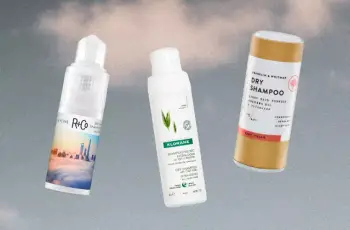
What does glycolic acid do for your face and what are its benefits?
Yes, we are here again to talk about another chemical peel, but I can assure you that you want to know everything about this glycolic acid. It is truly good for your skin, which is why we incorporate glycolic acid into a variety of products, including our glycolic acid face wash, blackhead peeling mask, and glycolic acid egg. So let’s jump right in and learn more about the benefits of glycolic acid for skin care.
What is glycolic acid?
As mentioned earlier, glycolic acid is an alpha hydroxy acid (or AHA) that is derived from sugar cane. Similar to other AHAs, it has humble and natural origins. But there is one unique thing about this acid, and that is its small size. Its molecular size is the smallest of all acids, which means that it is extremely effective and penetrates the skin the fastest to reach the lower layers of the skin and start repairing.
What does glycolic acid do on the face?
Glycolic acid exfoliates the skin, removing dead skin cells that accumulate on the surface of the face and can cause skin problems such as blemishes, dry spots, and dull complexion. Glycolic acid dissolves the “glue” that holds these skin cells to your face, revealing new, more vibrant, brighter skin underneath. Glycolic acid doesn’t stop there, it penetrates deeper into the skin, passing through the epidermis and increasing collagen production. As we age, this natural production slows down, causing our skin to lose firmness. With the help of this glycolic acid, you’ll find your skin feels firmer, with fewer signs of fine lines and wrinkles, giving you a noticeably smoother, more radiant complexion.
How often should you use glycolic acid?
This basically depends on your skin type and whether your skin can tolerate a chemical peel. For combination and oily skin, using glycolic acid every morning and night can help open up your pores and leave you feeling clean without stripping your skin of the important oils and moisture it needs for good health. If you have dry skin, you can try incorporating this product into your daily routine, using it once a week and keeping track of how your skin responds to the formula. This should all be done after doing a patch test 24 hours before using the product or consulting a dermatologist or GP.
You know your skin better than anyone. So even if you use glycolic acid products as directed, but your skin feels tight and uncomfortable, you should stop using them immediately before you over-exfoliate your skin and potentially trigger a reaction.
However, glycolic acid is a milder acid that many people find safe and easy to use in their skincare routine. You’ll also be interested to know that glycolic acid is immediately neutralized when it comes in contact with water. Not only does this mean you can wash it off if it burns or feels uncomfortable, but once it penetrates the skin and reaches the water in the lower dermis, it stays there. In other words, you won’t have severe irritation and bright red skin.
What should I put on my face after using glycolic acid?
It depends on which product has glycolic acid in its formula, but whether it’s a cleanser, face wash, or toner, glycolic acid should be followed by a hydrating serum rich in hyaluronic acid (learn more about the benefits of hyaluronic acid here) to hydrate and soothe the skin, followed by a moisturizer if you want to use it, or finally an SPF if you use it in your daily routine. Peeling can make your skin sensitive to UV rays. So, apply a sunscreen with SPF 30+ every day to protect your skin from sun damage.
What shouldn’t glycolic acid be used with?
Avoid using other AHAs when using glycolic acid as it may be too much for the skin. Instead, you can try mixing up your products, such as using a toner with glycolic acid at night and a serum with vitamin C in the morning. This way you can get the most out of these products but not over-exfoliate and overburden your skin.
It is also recommended not to use both physical and chemical peels at the same time as this will remove sebum from the skin, which can lead to overproduction and then your skin will have many breakouts such as spots and blemishes.
How long does glycolic acid take to work?
As with many ingredients in skincare, consistency is key. Regular use of products rich in glycolic acid will significantly improve the overall appearance of your complexion. The speed at which glycolic acid improves the skin is one of the many benefits of this AHA. Expect that you will start to see results after 2-3 weeks and your skin will show a complete transformation after 6-8 months.
Which is better, retinol or glycolic acid?
Both skin ingredients work very differently on the skin. Glycolic acid has an impressive effect in maintaining skin clarity and restoring a healthy glow. Retinol is a highly effective ingredient that effectively fights all signs of aging, such as fine lines, wrinkles, pigmentation, and more. These ingredients act on different parts of the skin, so you can use both in your nighttime routine. You may also find that retinol is able to penetrate the skin and show results faster, because glycolic acid removes all the dead cells from the skin. You can find out more about retinol in our special blog post. Learn about the benefits of retinol and why it is so good for the skin.
Do I need to wash off glycolic acid?
This again depends on the product containing glycolic acid. In a previous blog post, we mentioned the advantages of keeping active ingredients on the skin for as long as possible, such as in the form of a serum. However, due to the low molecular weight and size of glycolic acid, it can penetrate deep into the skin and work its magic. This means that if you wash glycolic acid off in your skincare routine, you will not reap any skin benefits.
Didn’t we tell you that it would be in your best interest to learn more about this hard-working AHA? If you want to learn more about what alpha and beta hydroxy acids do for your skin, check out our complete guide to AHAs and BHAs.


